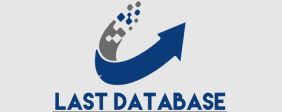This data highlights a key issue: outdated management systems and a lack of meaning in work are major barriers to engagement. Even the best material incentives cannot compensate for the lack of a human approach and conscious leadership.
Conscious leadership is, first and foremost, human leadership, when a leader does Conscious leadership not just perform tasks, but also takes into account the values, vision, and needs of the team.
Humanity is not the opposite of professionalism it is its foundation
The ability to see the human in a team is what ensures trust, engagement, and true collaboration.
In business, what often impresses is not the strategy or the linkedin data numbers, but the moment when an employee or team member feels seen as a person, not a function. This becomes a tipping point that allows for a deeper connection and opens up new possibilities for collaboration. In a Conscious leadership world where algorithms and standardized approaches often win, humanity becomes a real breakthrough.
Conscious leadership enables leaders to:
Identify the real reasons for resistance to change and work with them.
To create innovation through trust and freedom.
Build long-term strategies focused on sustainable development.
This is not just a new approach to management – it is a fundamental how artificial intelligence is changing the business sphere change in thinking that allows you to see people and processes in their depth, expanding perspectives for solutions and development.
Analysis of internal barriers in the business/organization/team
The most difficult challenges are not created by external circumstances, but by internal barriers. For example, fear of change or self-doubt.
Have you ever held back from making important decisions because of fear of failure? What fears or beliefs might be holding back the growth of your business, organization, or team?
One of the leaders of an educational project I worked with had been putting off launching a azb directory new initiative for a long time because he was afraid of losing the support of his existing audience. Once he recognized this fear, he was able to take a risk and launch a pilot project that became successful and helped scale the initiative.

